Alexander Dzubay was born on 12 Feb 1857 in Kalnik, Bereg County, Hungary, then part of the Habsburg Empire of Austria-Hungary. His forbears had been, for generations, mostly Greek Catholic priests. His grandfather was an exception to that rule-John Dzubay de Ortuto was a miller and a linen merchant. His father was not an exception to the rule-the Very Reverend Stephen Dzubay de Ortuto, born 14 Aug 1824, was educated from his youth to become a Greek Catholic priest. He was ordained in 1855 in the Ungvar Munkacs Greek Catholic Diocese, and was a prominent clergyman who reposed as Diocesan Dean in 1898. He was also prominent in the politics of the Austro-Hungarian Empire, a member of the Monarchist party.[1] Personal History of Fayette County, Pennsylvania Biographical and Genealogical, John W. Jordan, LL.D., & James Hadden, eds. 3 (Lewis Historical Publishing Company: NY, NY 1912) @google.com/books
The Empire of Austria-Hungary was also known as the Dual Monarchy, the Habsburg monarch being titled “Emperor of Austria,” as well as “King of Hungary.” It was not, however, an Empire of only Austrians and Hungarians-it was a patchwork conglomeration of 11 principle nationalities (and who knows how many minor nationalities?) who had, at one time or another, been subjugated to the House of Hapsburg. The Empire included Croatians, Czechs, Germans, Hungarians, Italians, Poles, Romanians, Serbs, Slovaks, Slovenes, Turks, and Ukrainians. The term “Ukrainian” included Russians, Carpatho-Russians, Rusins and Ruthenians. The Slavic peoples were concentrated at the borders of the Empire, with the Germans (Austrians) and Hungarians forming a central bloc. The Orthodox peoples of the Empire were concentrated in the south and east. Serbs, Romanians, Russians . . . although the Russian Empire was nominally an ally, and had saved the Habsburgs from the Revolution of 1848, those citizens of the Empire who may have loyalties to the Russian Empire were highly suspect. Loyalty to Russia could come only from loyalty to the Russian Orthodox Church. There were, to be sure, also Serbian and Romanian irredentists who would have been happy to have their respective lands in Austria-Hungary joined to Romania and Serbia. Those states, however, were not seen as a threat to the existence of the Austro-Hungarian Empire; the only “threat” was the Russian Empire. The central bloc of Germans and Hungarians was largely Catholic, and to “lessen tensions,” the Unia with Rome had been forced on many Orthodox people of the Empire at various times. The Catholic Czechs played a large part in the “cosmopolitan bureaucracy” which ran the governments of the Empire (those of Austria and Hungary), which also depended on the loyal majority of the German, Hungarian, Polish and Croat aristocracies. In short, Roman Catholics ruled the Empire, and the Orthodox were marginalized territorially, economically, and basically in any other fashion possible.[2]en.wikipedia.org/wiki/Austria-Hungary
Alexnder Dzubay was “carefully trained, as befitting the son of a good priest,”[3]op cit 1 had been a schoolmate of the future Father Alexis Toth (Glorified as Saint Alexis of Wikes-Barre in 1994 by the Orthodox Church in America) at the Ungvar Seminary,[4]op cit 1 and was ordained to the Greek Catholic priesthood in 1881 by the Right Reverend John Kovach Pasztely, Greek Catholic Bishop of Ungvar. Alexander Dzubay had married Elizabeth Csucska on 3 Mar 1881, and she died on 04 Nov 1881. She was the daughter of a Greek Catholic priest. After her death, Father Alexander Dzubay worked alongside his father as his assistant priest in Ungvar, and was “a shining light.”[5]op cit 1
After eight years of service to the Greek Catholic Diocese of Ungvar, Father Alexander Dzubay decided to fulfill the requests of his co-religionists in the United States, and travel there to minister to them. Greek Catholics of the Austro-Hungarian Empire-“Hungarians, Slavs, Austrians, Russians, and others mostly of the Greek Catholic faith,” had been greatly attracted by the demand for unskilled labor in the oil fields and coal mines of Pennsylvania. Greek Catholic clergy were rather slow to follow their compatriots-in 1885 there were no Greek Catholic clergy in the U.S. With proper authority given by his Bishop, the Right Reverend John Kovach Pasztely of the Munkacs Greek Catholic Diocese, Father Alexander Dzubay arrived in Wilkes-Barre, Pennsylvania on 03 March 1889, becoming the first Hungarian Greek Catholic priest in the U.S. He founded a Greek Catholic parish there, remaining as its pastor there for two and a half years, at which time he returned to Hungary to visit his parents.[6]op cit 1
He came back to the U.S. on 13 March 1892, this time to Leisenring, Fayette County, Pennsylvania. There was a “large Slav population” in Leisenring, badly needing the ministrations of their faith. He built a Greek Catholic church there, the first constructed from brick in the U.S. He remained as the pastor in Leisenring for over 20 years. The parish there was large, counting 1800 members.[7]op cit 1
“The growth of the Greek Catholic church in the United States has been contributed to more largely by Rev. Alexander Dzubay than by any other individual. He has organized fifteen of the one hundred and sixty churches of that faith and personally served them until priests could be secured and placed in charge. He is a man of striking personality, profoundly educated and entirely consecrated to his work. An idea of the work he has performed may be gained from a list of the churches he has organized during the past twenty years in addition to the laborious work of his own church. He founded churches at Wilkes-Barre, Hazleton, Scranton, Duquesne, Osceola Mills, Punxsutawney, Johnstown, Trauger, Leisenring, Braddock, Pittsburgh and Homestead, all in Pennsylvania; Trenton and Passaic, New Jersey; Brooklyn and Yonkers, New York; Minneapolis, Minnesota; Streator, Illinois. He speaks fluently Latin, Hungarian, English, German, Russian and all the Slav dialects. He conducts church rites in all these languages and all members of his church can confess in their own tongue and be understood.
Not only is Rev. Dzubay and his church the pride of the Greek Catholics of Fayette County, Pennsylvania, but he is a national figure, known and honored in his own denomination and by all familiar with his work among a hitherto religiously neglected people. He has brought to thousands not only the comforts of their religion, but its restraining influences, and built up orderly, prosperous communities of men who, separated as they were from home and the civilizing influence of a Gospel taught in a language they could understand, were a constant menace to the peace of the towns in which they dwelt. The debt Pennsylvania owes to such hard-working, devoted priests as Father Dzubay cannot be estimated by those unacquainted with conditions in the mining districts of Pennsylvania, but those who are familiar with their work and have been so immensely benefited by it are loudest in the praise and generous contributors to their support.”[8]op cit 1
With such a dedication to the establishment, organization and building of the Greek Catholic faith in the United States, it seems impossible that Father Alexander Dzubay, Vicar General of the Greek Catholic Diocese, would leave it, and join himself, as well as many Greek Catholic parishes, to the Russian Orthodox Church. But that is exactly what happened. While obviously a fervent son of the Unia with Rome, Father Alexander was nonetheless a fervent defender of the “Orthodox Eastern rite.”[9]www.archive.org/stream/HistoricalMirrorGreekRiteCatholics1884-1963 He became convinced that the Unia with Rome, at least in the United States, was being used to Latinize the “Carpatho Rusin church.”[10]ibid. Coming to the conclusion that the Carpatho Rusin church could be preserved by no other means than a “complete renunciation” of the Unia, on 30 Jul 1916, he decided to join himself to the Russian Orthodox Church. He was tonsured a monk that same day, and took the name “Stephen,” his father’s name. His father was also a great defender of the “Orthodox Eastern rite.” 31 Jul 1916, Hieromonk Stephen (Dzubay) was elevated to Archimandrite.[11]ibid.
On 15 Aug 1916, Archimandrite Stephen (Dzubay) was consecrated to the Episcopate by Archbishop Evdokim (Vassily Mikhailovich Meshchersky, 01 May 1869-22 Oct 1935, 1922 joined the Renovationist ‘Living Church’ schism in the Soviet Union) of the Aleutians & North America, and Bishop Alexander (Alexander Alexeevich Nemolovsky, 30 Aug 1876-04 Nov 1960, later Metropolitan of Brussels & Belgium for the Moscow Patriarchate) of Canada. Bishop Stephen (Dzubay) was a Vicar of the North American Diocese, titled “of Pittsburgh and the Carpatho-Russians.”[12]ibid.[13]ortho-rus.ru The Greek Catholics that he had left were less than happy about this development. An article entitled “The Crown is Placed on the Head of the Perfidious Dzubay” (in “Rusin,” 16 Aug 1916, p. 1) remarked that “a crown without a cross was placed on the head of an unworthy apostate in the Russian Cathedral.”[14]op cit 9 During his time as Bishop, “he took over to Orthodoxy the following parishes: Alpha, PA; Perryopolis, PA; Elizabeth, NJ; East Chicago, IN; Mishawaka, IN; Cleveland, OH; Barberton, OH; Detroit, MI; Monongahela, PA; Lawrence, MS; Greensburg, PA; Wilpen, PA; Lakewood, OH; Utica, NY; Clover, PA; Curtisville, PA; Witham, WV; Youngstown, OH; Witt, IL; Lorain, OH; etc.”[15]op cit 9
Bishop Stephen (Dzubay) of Pittsburgh and the Carpatho-Russians had been consecrated to the Episcopate to serve the former Greek Catholic Uniates who had converted to Orthodoxy. The Russian Orthodox Diocese the Aleutians & North America at that time consisted of roughly 200 parishes. One-hundred and sixty of those parishes were composed of Greek Catholics who had converted to Orthodoxy.[16]http://www.archive.org/stream/historicaloutlin00strauoft/ _djvu.txt Archbishop Evdokim (Meshchersky) left the U.S. to participate in the All Russian Council of 1917-1918. He never returned; in his absence, Bishop Alexander (Nemolovsky) was appointed to oversee administration of the Diocese.[17]http://www.htocvt.org/history.htm Bishop Stephen (Dzubay) worked closely with Bishop Alexander, as a “senior auxiliary.”[18]op cit 16
“In view of the events taking place in Russia and the necessity to reorganize church life undermined by the revolution, a Church Council of the archdiocese was convened in Cleveland in February 1919. This was the second Church Council, following the one convoked in Mayfield in 1907, but it was the first one with voting representatives of the laity, according to the new statute adopted by the Russian Orthodox Church at the All Russian Church Council which was held in Moscow in 1917. At this Council in Cleveland Bishop Alexander of Canada was elected head of the archdiocese with the title of Archbishop of North America & Canada.”[19]op cit 16 (Church records seem to indicate otherwise concerning both Bishop Alexander’s title and elevation to Archbishop in 1919; Patriarch Tikhon (Vassily Ivanovich Bellavin, 1865-1925, Glorified as New Martyr of Russia in 1981 by ROCOR, and ) did not confirm his role as ruling Bishop of North America until Aug 1920. Bishop Alexander (Nemolovsky) left the U.S. in 1921 for Yugoslavia to participate in the Karlovtsy Council (which established the ROCOR), where his appointment as ruling bishop in North America was confirmed. There is no mention of an elevation to Archbishop until 11 December 1936, when he was elevated to Archbishop with the title “of Brussels & Belgium” by the Patriarchate of Constantinople.[20]www.orth-rus.ru/cgi-bin/ps_file.cgi?2_303[21]orthodoxwiki.org/Alexander_%28Nemolovsky%29_of_Brussels)
There were, however, a number of problems with the administration of the North American Diocese by Bishop Alexander (Nemolovsky). Mostly financial, mostly not of his own making. Funding from Russia was completely stopped after the Revolution. Archbishop Evdokim (Meshchersky) had left a debt of $100,000. Local fundraising efforts were largely failures. Bishop Alexander’s failure to understand financial matters, as well as the mortgaging of parish property as a stopgap measure to raise money only made matters worse. There were also various factions-ethnic and political-that only aggravated opposition in those disgruntled over the financial problems.[22]ibid.
Archbishop Platon (Porfiri Feodorovich Rozhdestvensky, 1866-1934) had ruled the North American Diocese from 1907 to 1914. The Holy Synod recalled him to Russia in 1914, where he ruled various Dioceses. He was elevated to Metropolitan in Aug 1917 with the title “of Tiflis & Baku, Exarch of the Caucasus,” attended the All Russian Church Council in 1917, and the All Ukrainian Church Council in 1918, where he was appointed Metropolitan of Kherson & Odessa. In 1920, he was forced to leave Odessa by the defeat of the White Army, and eventually emigrated to the U.S.[23]orthodoxwiki.org/Platon_%28Rozhdestvensky%29_of_New_York[24]www.ortho-rus.ru/cgi-bin/ps_file.cgi?2_332 With Metropolitan Platon back in the U.S., Bishop Alexander, who apparently was looking for a way out of the situation, mailed Platon a letter on 7 Jun 1922, asking him to take over the Diocese.[25]op cit 20
Most probably, this is what Metropolitan Platon was seeking when he returned to the U.S. He took control of the Diocese in Sep 1923 when a Church Council in Pittsburgh elected him as ruling Hierarch of the Diocese. This election was eventually confirmed by Patriarch Tikhon.[26]op cit 17, 20, 22 True to the spirit of those times, there were those who disagreed with this ‘solution’ to the problems of the North American Diocese. One of those who disagreed was Bishop Stephen (Dzubay). Due to his close work with Bishop Alexander, and the fact that he held sway (if not technically by the limits of his Carpatho-Russian Diocese, then at least emotionally by all the former Greek Catholics in the North American Diocese) over approximately 80% of the parishes in the North American Diocese, he felt it was his right to take over as head of the North American Diocese. When the news of Bishop Alexander’s letter to Metropolitan Platon surfaced, Bishop Stephen acted. In October 1922, acting as self-proclaimed “Head” of the North American Diocese, Bishop Stephen, along with Bishop Gorazd (Matthias Pavlik, 1879-1942, consecrated Bishop of Moravia & Silesia by the Serbian Orthodox Church 24 Sep 1921, martyred by Nazis in WWII, Glorified as New Martyr by the Orthodox Church of Czechoslovakia in 1987), who was visiting the U.S., consecrated Archimandrite Adam (Adam Apollinarievich Phillipovsky, 1882-1956, head of an independent Diocese of Carpatho-Russians after his consecration went unrecognized by the North American Diocese, which he rejoined in 1935, as Vicar Bishop titled “of Philadelphia and the Carpatho-Russians,” later Exarch of North America for the Moscow Patriarchate) as Bishop of Canada. Bishop Stephen planned to place Adam at the head of his Diocese of Pittsburgh & the Carpatho Russians if he could succeed in becoming head of the North American Diocese. Bishop Stephen’s bid for rule of the North American Diocese failed. He rejoined the Diocese in 1923.[27]www.ortho-rus.ru/cgi-bin/pd_file.cgi?2_332[28]Orest T. Martynowych, Ukrainians in Canada: The Formative Period: 1891-1924 (Canadian Institute of Ukrainian Studies, University of Alberta, Edmonton, Alberta, Canada 1991) @google.com.books
Bishop Stephen’s return to the North American Diocese was not long-lived. The following document was issued by Bishop Stephen Soter Ortynsky, 12 May 1924:
“Those who were closely acquainted with Fr .Alexander Dzubay were aware for a long time, that he, in a few months of his episcopacy after his apostasy, as it was expected, did not find peace for his conscience, but day by day it disturbed him more and more. The words of his conscience set a burning desire to return to his Mother, from whom he had separated in a time of weakness. He could not see in the so called Orthodox Church the faith which he expected, nor discipline, without which the church not even the Orthodox organization can exist … All this brought him to this, that through the representative of the Holy See in the United States of America, the Apostolic Delegate, he asked to be accepted into the Universal Catholic Apostolic Church. The Holy Father heard the petition of the penitent Fr. Alexander Dzubay, accepted him into the bosom of our One Church under conditions that, he renounce all in this manner:
‘I the undersigned, Bishop of the Orthodox Church in the United States of America do hereby proclaim, that I am following the voice of my conscience being convinced without influence or force, that I forever renounce and curse the Russian Schism, in to which I fell without a sober consideration for false motives. I am sincerely sorry with all my heart, for my error and am firmly unshakably leaving this schism, admitting that there is only one true Church, which is established on the Rock of Peter in which there is the only possible way of my souls salvation, in the Holy Catholic Apostolic Church, under the visible Head the Roman Pope, the Vicar of Christ and successor of St. Peter. This is my sincere decision to which I subject myself in all matters of religion and customs . I am sincerely sorry that I, with my apostasy caused scandal to the faithful Catholics. I solemnly promise to correct as much as possible by all my strength, the scandals and evils that I have caused. I declare with humility and joy that am accepting all the conditions and the penance placed on me by the Holy Father of the Holy See. By accepting me back to the bosom of the Catholic Church, I will pray to God our Lord, that He through His mercy forgive me my error and all my sins, which I committed. I solemnly promise that in the future after my return to the Catholic Church, I will not function as a bishop in any ceremonies.
New York, N.Y.
May 12, 1924
[signed] Stephen Alexander DzubayWitnesess :
Fr. Peter Poniatisin Administrator of the Ukrainian Exarchate
Fr. Constantine Roskovics, Pastor of St. Nicholas Church Yonkers, N.Y.
Fr. Alexander Pavlak Pastor of St. Vladimir Church Elizabeth, N.J.’
After the signing of the renouncing of Schism, Fr. Alexander Dzubay confessed May 15, 1924 in the St, Nicholas of Myra Church
Yonkers, N.Y.
Rt. Rev. Soter Ortynsky
Greek Rite Catholic Bishop”[29]Statement of Bishop Soter Ortynsky
After becoming reconciled to the Unia, Stephen Alexander Dzubay went “on retreat”[30]ibid. to the Franciscan Friars of the Atonement Monastery, ‘Graymoor,’ located in Garrison, N.Y. The Franciscan Friars of the Atonement date their founding to 1898, at Graymoor, but this religious order was part of the Episcopal Church in the U.S. at the time of its founding, and accepted into the Roman Catholic Church in 1909. Although not seemingly a place that a staunch defender of the ‘Orthodox Eastern rite’ would find to his liking, Stephen Alexander Dzubay apparently never ended his retreat at Graymoor. He died there in 1933. The Vicariate of the North American Diocese, “of Pittsburgh and the Carpatho-Russians,” was dismantled after his retreat to the Unia, the parishes joining local geographically based Dioceses.[31]www.atonementfriars.org[32]www.ortho-rus.ru/cgi-bin/ps_file.cgi?2_330
Despite the sensation caused at the time by Alexander Dzubay’s conversion to Orthodoxy from the Unia, and his subsequent retreat to the Unia, it seems he is principally remembered today for one action that had nothing whatsoever to do with his entrance into, or leave taking from, the Orthodox Church. He is remembered for his participation in the consecration to the Episcopate of Aftimios (Ofiesh) of the Syrian Mission of the Diocese of the Aleutians & North America of the Russian Orthodox Church. The consecration took place in the Russian Cathedral in New York City on 17 April 1917. Archbishop Evdokim (Meshchersky) officiated, assisted by Bishop Alexander (Nemolovsky), and Bishop Stephen (Dzubay). It is a quirk of history that a Bishop who held some form of allegiance from 80% of the parishes of the North American Diocese has had his memory eclipsed by a Bishop who held allegiance from a relatively small percentage of mission parishes of the North American Diocese, and also left the Orthodox Church. Or is it?
- Bishop Soter Ortynsky & Greek Catholic Consistory from: www.stamforddio.org/Ortynsky.htm
References
| ↵1 | Personal History of Fayette County, Pennsylvania Biographical and Genealogical, John W. Jordan, LL.D., & James Hadden, eds. 3 (Lewis Historical Publishing Company: NY, NY 1912) @google.com/books |
|---|---|
| ↵2 | en.wikipedia.org/wiki/Austria-Hungary |
| ↵3 | op cit 1 |
| ↵4 | op cit 1 |
| ↵5 | op cit 1 |
| ↵6 | op cit 1 |
| ↵7 | op cit 1 |
| ↵8 | op cit 1 |
| ↵9 | www.archive.org/stream/HistoricalMirrorGreekRiteCatholics1884-1963 |
| ↵10 | ibid. |
| ↵11 | ibid. |
| ↵12 | ibid. |
| ↵13 | ortho-rus.ru |
| ↵14 | op cit 9 |
| ↵15 | op cit 9 |
| ↵16 | http://www.archive.org/stream/historicaloutlin00strauoft/ _djvu.txt |
| ↵17 | http://www.htocvt.org/history.htm |
| ↵18 | op cit 16 |
| ↵19 | op cit 16 |
| ↵20 | www.orth-rus.ru/cgi-bin/ps_file.cgi?2_303 |
| ↵21 | orthodoxwiki.org/Alexander_%28Nemolovsky%29_of_Brussels |
| ↵22 | ibid. |
| ↵23 | orthodoxwiki.org/Platon_%28Rozhdestvensky%29_of_New_York |
| ↵24 | www.ortho-rus.ru/cgi-bin/ps_file.cgi?2_332 |
| ↵25 | op cit 20 |
| ↵26 | op cit 17, 20, 22 |
| ↵27 | www.ortho-rus.ru/cgi-bin/pd_file.cgi?2_332 |
| ↵28 | Orest T. Martynowych, Ukrainians in Canada: The Formative Period: 1891-1924 (Canadian Institute of Ukrainian Studies, University of Alberta, Edmonton, Alberta, Canada 1991) @google.com.books |
| ↵29 | Statement of Bishop Soter Ortynsky |
| ↵30 | ibid. |
| ↵31 | www.atonementfriars.org |
| ↵32 | www.ortho-rus.ru/cgi-bin/ps_file.cgi?2_330 |

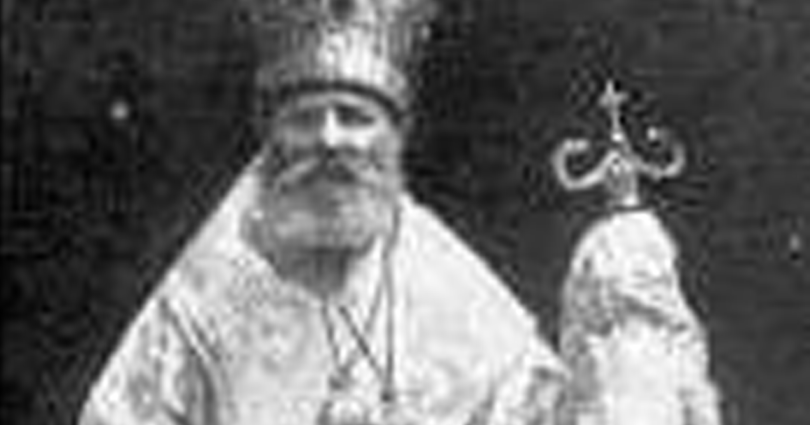
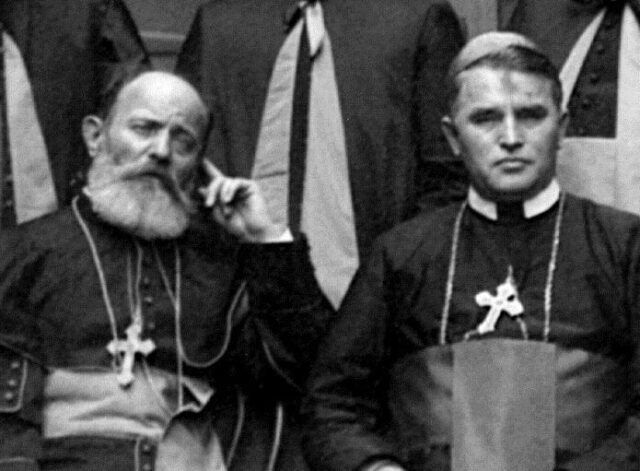
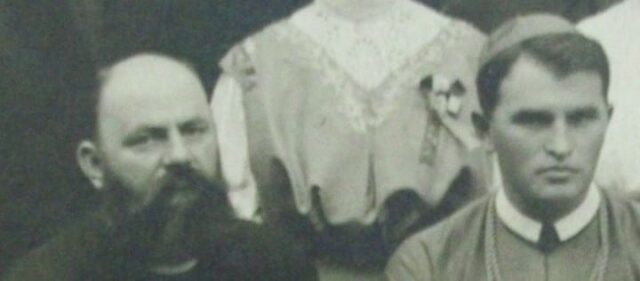
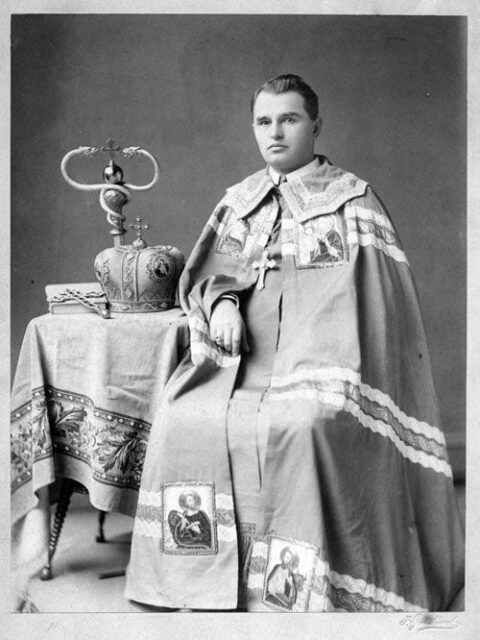
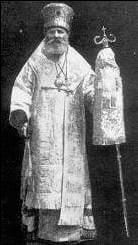
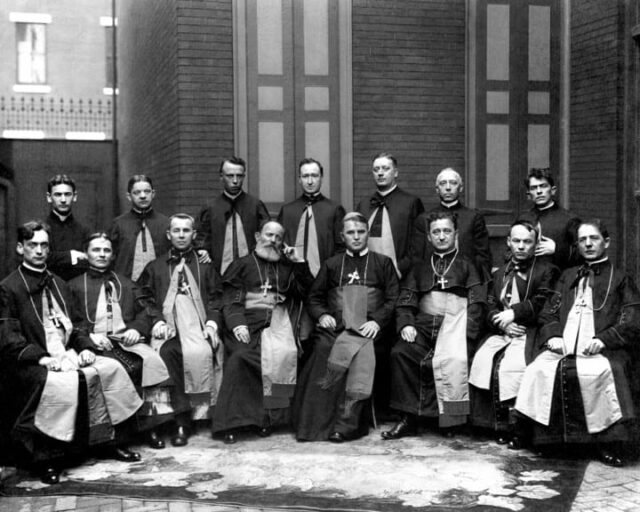






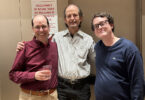
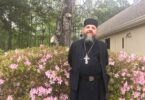

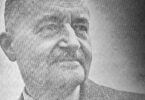
The letter of May 12, 1924 discussing the return of Fr. Dzubay to the Greek Catholic Church could not have been signed by Bishop Soter Ortynsky since he died on March 24, 1916 (http: en.wikipedia.org/wiki/ Soter_Ortynsky). The Greek Catholic Exarchate was divided into Rusyn (Carpathian) and Ukrainian (Galician) administrations shortly thereafter. In 1924, separate bishops were consecrated for each new exarchate: Bishop Basil Takach for the Rusyns and stationed in Pittsburgh; and Bishop Constantine Bohachevsky for the Ukrainians, stationed in Philadelphia. It would make sense that Bishop Constantine signed the letter since it was to the Ukrainian Exarchate (as your article notes above) that Fr. Dzubay returned.
Rev. Peter Poniatishin, Administrator of the Ruthenian Greek Catholic Eparchy, signed the the paper of acceptance with Bishop Dzubay.
Bishops Bohachevsky and Takach arrived in the United States on August 15, 1924